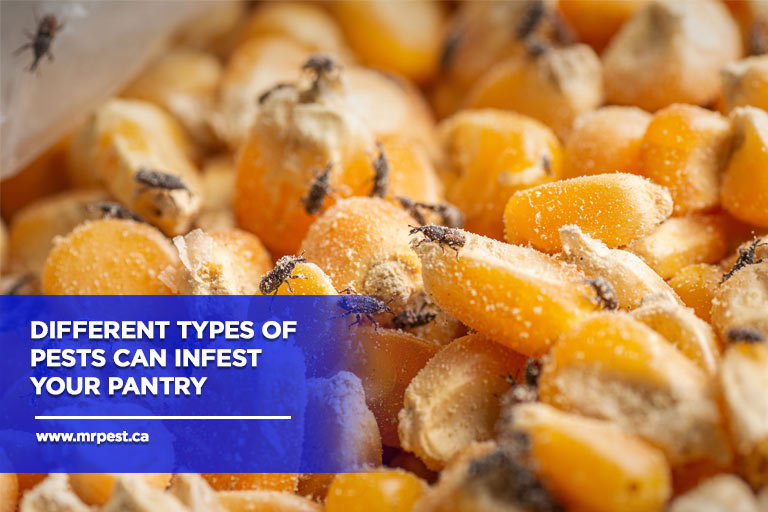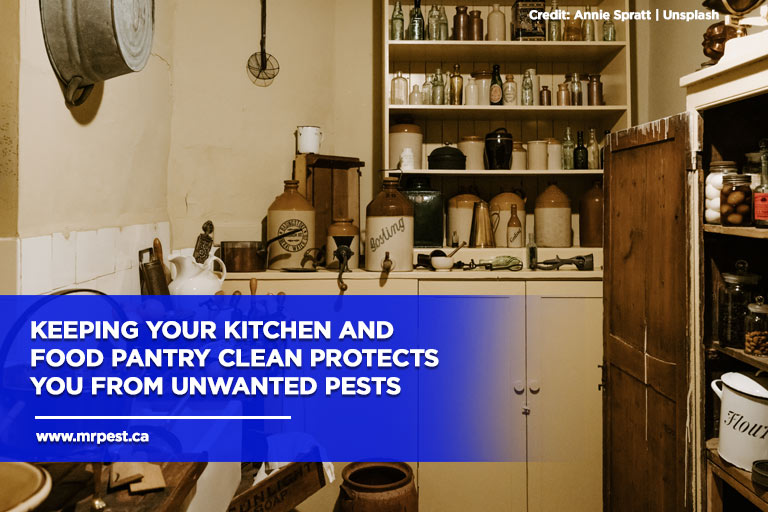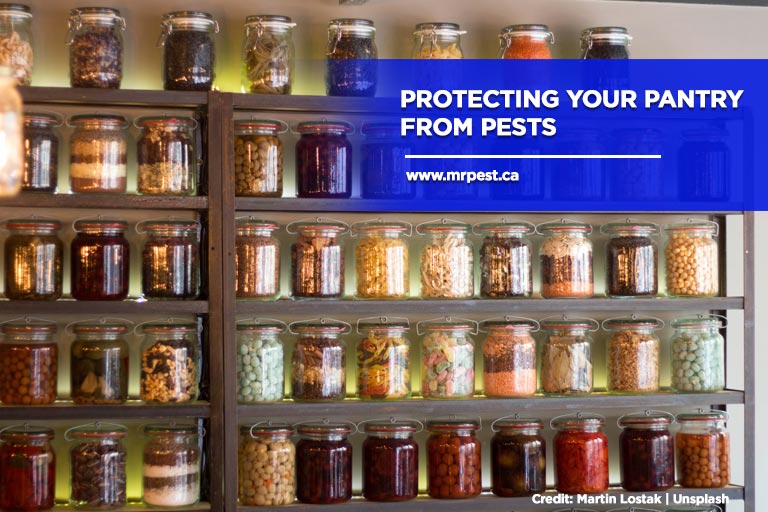Have you noticed some unwanted guests invading your kitchen pantry? Various pests can find their way to pantry cabinets, drawers, and shelves and get their hands on food items and ingredients. You might not know where and how they came to be there, but one thing is for certain: you need to get rid of them. Check out this article to know more about protecting your pantry from pests.
Common Pantry Pests

The first step to protecting your pantry from pests is knowing what the most common pantry food bugs are. Once you’re familiar with them, it’ll be easier for you to notice the signs that they’ve made their way into your pantry.
- Indian Meal Moth
You’ll commonly see these meal moths near food, even unopened ones. What happens is that these pests lay their eggs near sources of food and then the larvae can get into food packaging. Their mouthparts allow them to gain access to unopened food packages. They grow about ⅝”. Adult moths live only for a short time so they causes the most damage to your food during the larvae stage. You can usually find them in flour, dried fruits, and nuts.
- Flour Beetles
Flour beetles can grow up to ⅛”. You can usually find them eating grain products or kernels. Make sure to check the food products that contain flour, pet food, cereal, and other grain products. You’re likely to find them there.
- Cigarette Beetles
These pantry pests can fly so you may be able to spot them flying around your house. Cigarette beetles commonly feed on tobacco and other related products, but you’ll also see them eating spices, grains, and paper products.
- Weevils
Weevils can live up to 2 years and they reproduce fast. They’re very tiny pests at only 2mm but they are quite dangerous. This type of pest is mostly attracted to grain-based products. They drill a hole in the grain where the female weevil lays her eggs before sealing them with her body secretions. Once the eggs mature and hatch, the larvae eat their way out of the grain.
How to Avoid Pantry Pests

It’s easy for pantry pests to invade and contaminate the food in your pantry. You can even bring them home from the local grocery if their supplies are infested.
Here’s what you can do to keep them from taking a foothold in your pantry.
- Always check the packaging before buying
There’s a reason people warn you not to buy food products with broken boxes or dented cans. Packaging matters. Fraying, chips, cracks, or dents could mean that there are miniature holes in the packaging. Pantry pests are extremely small and may have chewed their way through the food packaging.
- Be careful when buying in bulk
Bulk items often sell last. These items are typically older products that have not yet expired. However, because it has been stored for quite some time, pests may have infiltrated the packaging. Before buying bulk items, make sure to check that the packaging is intact. Also, as you walk through the aisle in the bulk section of your grocery store, make sure to check for any signs of bugs and pests on the shelves and the air as these are the most common signs of a pest infestation.
- Use air-tight food containers
Using air-tight containers helps ensure that there’s no way for even the smallest of kitchen pests to enter. It also helps protect your new food from being contaminated by older contaminated food. Remember to remove all dry products and ingredients that you have and transfer them to air-tight containers. This is important because some pests, like cigarette beetles, are attracted to paper products.
- Throw away old and expired food products
As recommended by the Health Canada Pest Management Regulatory Agency, before you store your newly bought products, you have to first identify what needs to be thrown away. This could be expired or old products that you’re not using anymore. When food products go bad, they become more attractive to pests. Never store your new food products with old ones unless you’re absolutely sure the old ones are pest-free.
- Add bay leaves to the containers, shelves, and drawers
Bay leaves have an extremely pungent aroma and can be used as a deterrent for pantry pests. Most food pests do not like this smell so they avoid places where the scent is the strongest. Make sure to put whole bay leaves in areas where you think most food bugs come from. However, you should use bay leaves sparingly especially if you don’t like the smell yourself. The scent can also stick to the food products and may impact their taste. Households that store bay leaves in their rice containers have found that their rice grains have absorbed the smell.
- Clean your pantry regularly
You might have been asking yourself lately “why do I have pantry pests”? There are several causes. You may have gotten them from expired products or food that came in damaged packaging. No matter what the reason is, it’s important that you clean your pantry regularly. Cleaning not only involves wiping down the drawers and spaces, but it also involves making sure that the containers are clean, the crumbs are removed, and everything that needs to be discarded is discarded.
Pantry pests are a nuisance. Once you spot the signs of an infestation, make sure to immediately deal with them to prevent damage and sickness. As long as you follow the steps suggested above, you can easily maintain a pest-free pantry. If you’re seeing signs of an infestation and you don’t know how to deal with it, make sure to call pest control services in Orilla. Call us at 705-326-3377, or email us at peteb@mrpest.ca.



